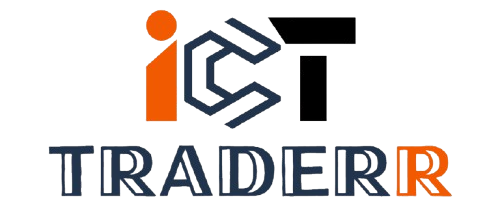Understanding daily bias is essential in the world of trading, especially within the ICT (Inner Circle Trader) methodology. ICT Daily Bias helps traders determine the most probable market direction for the day, improving trade accuracy and profitability. But what exactly is ICT Daily Bias, and why does it matter?
In this blog post, we will explore the concept of ICT Daily Bias, how to identify it, the difference between institutional and retail order flow, and practical strategies for trading both bullish and bearish biases.
What is ICT Daily Bias & Why It Matters?
ICT Daily Bias means the direction of the market during a particular trading day. It serves traders in predicting whether the day is inclined toward bullish (up) or bearish (down) based on an understanding of institutional order flow, liquidity, and key price levels.
Why ICT Daily Bias Matters?
- Enhances Trade Accuracy: Identifying the correct daily bias prevents entering trades against the prevailing trend.
- Aligns with Institutional Order Flow: Understanding where smart money is moving helps traders avoid common retail trading mistakes.
- Improves Risk Management: When traders follow the daily bias, they can set better stop losses and take profit levels, reducing unnecessary losses.
By recognizing the ICT Daily Bias, traders can make informed decisions rather than relying on guesswork or emotions.
Step-by-Step Process to Identify ICT Daily Bias
To determine the ICT Daily Bias, traders follow a structured approach:
1. Analyze Higher Timeframe Market Structure
- Higher highs and higher lows (bullish trend) or lower highs and lower lows (bearish trend) are checked in higher timeframes, such as daily charts and 4-hour charts.
- Identify the important levels like support and resistance.
2. Check Institutional Liquidity Zones
- Observe liquidity pools where large orders might be executed.
- Look for areas with equal highs or equal lows, which act as liquidity targets.
3. Study ICT Fair Value Gaps (FVGs) & Order Blocks
- Fair Value Gaps indicate imbalance zones where price may return before continuing the trend.
- Order Blocks, created by institutional traders, serve as strong support/resistance areas.
4. Use Economic News & Events
- High-impact news (such as FOMC, NFP, CPI) can influence the daily bias.
- If a major event aligns with the overall trend, it strengthens the bias.
5. Confirm with Market Open & Session Trends
- Observe how the market reacts during the London Open and New York Open to confirm the direction.
By following these steps, you can establish a reliable ICT Daily Bias before placing trades.
Institutional Order Flow vs. Retail Order Flow
Understanding Institutional Order Flow (Smart Money) vs. Retail Order Flow (Dumb Money) is crucial for trading ICT Daily Bias.
| Aspect | Institutional Order Flow (Smart Money) | Retail Order Flow (Dumb Money) |
| Market Influence | Moves the market with large orders | Trades based on emotions and indicators |
| Liquidity Targeting | Hunts retail stop-loss orders | Gets trapped at liquidity levels |
| Bias Identification | Uses order blocks, FVGs, and liquidity grabs | Uses retail patterns (head & shoulders, RSI overbought/oversold) |
| Trade Execution | Enter at discount (bullish) or premium (bearish) | Chases price, buying tops and selling bottoms |
If you align with institutional order flow, you increase your chances of success, while following retail order flow can lead to consistent losses.
Trading a Bullish ICT Daily Bias
If the ICT Daily Bias is bullish, you should look for opportunities to buy at discount levels and target liquidity above previous highs.
Steps to Trade a Bullish Bias:
- Identify a strong bullish trend on the daily chart.
- Look for Fair Value Gaps (FVGs) or Order Blocks (OBs) at discount levels.
- Wait for a liquidity sweep below previous lows before entering long trades.
- Enter after confirmation (e.g., bullish candlestick pattern at key level).
- Place a stop loss below the liquidity grab and target previous swing highs.
Example of a Bullish Trade Setup:
- Market Structure: Higher highs and higher lows.
- Liquidity Grab: Stop the hunt below a key support level.
- Entry Trigger: Bullish reaction from an order block.
By following these steps, you can capitalize on bullish ICT Daily Bias setups.
Trading a Bearish ICT Daily Bias
When the ICT Daily Bias is bearish, you should look for opportunities to sell at premium levels and target liquidity below previous lows.
Steps to Trade a Bearish Bias:
- Confirm a bearish trend on the daily chart.
- Identify Fair Value Gaps or Order Blocks at premium price levels.
- Wait for a liquidity grab above previous highs before entering short trades.
- Enter after a bearish confirmation (e.g., a bearish engulfing candle at a key level).
- Set a stop loss above the liquidity grab and target previous lows.
Example of a Bearish Trade Setup:
- Market Structure: Lower highs and lower lows.
- Liquidity Grab: Stop the hunt above resistance.
- Entry Trigger: Price rejection from an order block.
Executing trades based on a bearish ICT Daily Bias ensures you align with institutional selling pressure.
Common Mistakes Traders Make with ICT Daily Bias
Many traders struggle with ICT Daily Bias due to the following mistakes:
- Ignoring Higher Timeframes: Focusing only on lower timeframes without considering the daily or 4-hour trend leads to poor trade entries.
- Chasing Breakouts: Entering trades after a breakout without confirmation increases the risk of getting trapped.
- Neglecting Liquidity Zones: Failing to identify liquidity sweeps results in unnecessary stop losses.
- Overtrading: Taking multiple trades without waiting for the best setups leads to losses.
- Not Adapting to News Events: Ignoring major economic news can cause unexpected price movements.
Avoiding these mistakes improves trading consistency and profitability.
Conclusion
ICT Daily Bias is a powerful tool that helps traders predict the market’s direction for the day. Using market structure, liquidity zones, Fair Value Gaps, and institutional order flow, traders can position themselves in the direction of smart money flow and increase the probability of general success.
Bullish or bearish bias, applying the right entry and exit strategies, and knowing about common mistakes can positively affect trading performance. A proper understanding of ICT Daily Bias will keep traders ahead of retail traders and assist them in making trading decisions based on evidence.
“By mastering ICT Daily Bias, traders can navigate the markets more effectively and trade with confidence. “
FAQs
How do I determine ICT Daily Bias?
Use higher timeframe analysis, liquidity zones, and market structure to identify the probable market direction.
Can ICT Daily’s Bias change during the day?
Yes, unexpected economic news or liquidity shifts can alter the bias intraday.
Is ICT Daily Bias useful for all trading styles?
Yes, whether you’re a day trader, swing trader, or scalper, identifying daily bias improves trade accuracy.
What is the best timeframe to confirm ICT Daily Bias?
The daily and 4-hour charts provide the best confirmation, while lower timeframes help with precise entries.
How can I avoid false ICT Daily Bias signals?
Wait for liquidity grabs and confirmation patterns before entering trades.


